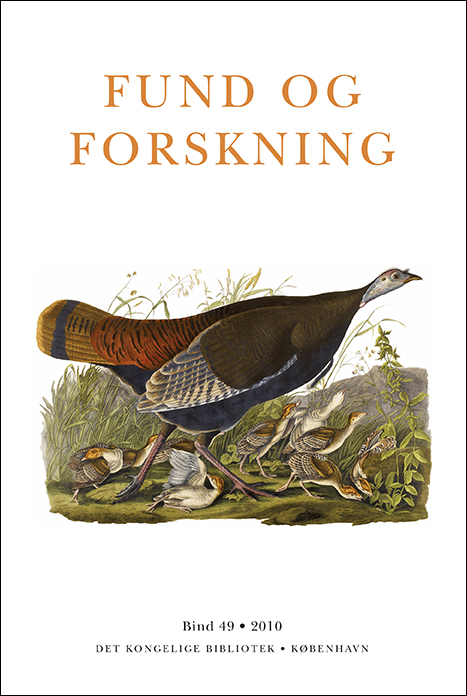Tycho Brahes supernova i 1572 set med samtidens øjne. Religiøse og astronomiske tolkninger hos Georg Busch og Rasmus Hansen Reravius
DOI:
https://doi.org/10.7146/fof.v49i0.41226Abstract
NB: Artiklen er på dansk, kun resuméet er på engelsk.The appearance of the supernova in 1572 gave rise to a series of publications on the unknown heavenly body’s nature and significance. The most famous is the work by Danish astronomer Tycho Brahe, De nova stella, in which the author maintained that it must be a question of a new star. But even though Tycho’s observations had far-reaching implications for the history of science, there were other contemporary interpretations of the heavenly phenomenon that attracted greater public attention. Georg Busch, a German painter, was one of the first to write about the phenomenon. According to Busch, it was a comet. He further claimed that it had been created by human sin having generated steam made up of impurities that, condensed into a tight ball, had risen into the air, where it was ignited by oxygen as a comet. Busch’s book was very popular in Germany and in Scandinavia as well, where it was published in a translation by a clergyman, Rasmus Hansen Reravius (Danish was also the written language in Norway at the time) and in a Swedish translation based on Reravius’ work. Reravius, however, published his work after Tycho, to whom Reravius refers indirectly, had made his theory public. As a result, Reravius emphasised the phrase “new start” in his title and preface and is therefore one of the first popularising authors in whose work a spillover from Tycho’s observations is evident. Reravius’ intention was, however, certainly not to make Tycho’s astronomy better known but, on the contrary, to preach repentance and penance to the population, since, for Scandinavian readers, he had put forward Busch’s interpretation of the “comet.” This interpretation, according to which the comet was not only a warning sign from God to humankind but that it had been actually, physically created by sin, does not seem to have spread very far in Europe generally but was apparently particularly appealing to Lutheran society in the 1500s. In any case, it is only in these countries that the theory was proposed, first and foremost through Busch and his Nordic translators. Closer examination of these publications thus gives us not only an insight into how new knowledge was disseminated in the 1500s. In a broader perspective, it also gives an insight into the Protestant world of ideas, in which religious and scientific explanations were interwoven.Downloads
Published
2014-06-11
How to Cite
Fink-Jensen, M. (2014). Tycho Brahes supernova i 1572 set med samtidens øjne. Religiøse og astronomiske tolkninger hos Georg Busch og Rasmus Hansen Reravius. Fund Og Forskning, 49, 57. https://doi.org/10.7146/fof.v49i0.41226
Issue
Section
Articles


